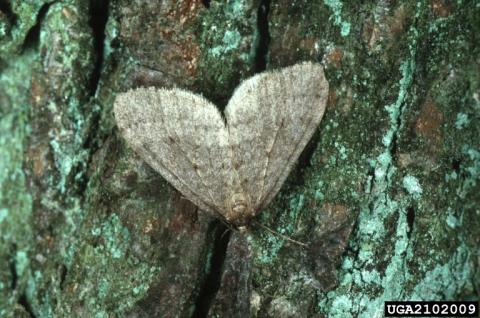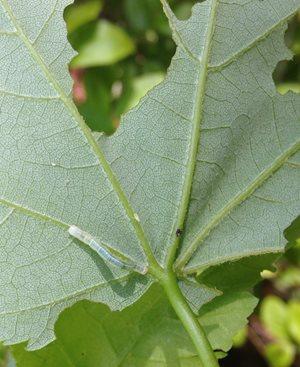Winter moth (Operophtera brumata) is an exotic defoliator from Europe that was first reported in Nova Scotia in the 1930s and eastern Massachusetts in the late 1990s. It has since spread west and south to Rhode Island, Connecticut and Long Island. It was discovered in Maine in 2012, has also been found throughout coastal Maine from Kittery to Bar Harbor, and is now in Southern NH. Winter moth caterpillars defoliate hardwood species, often stripping the leaves of oaks, maples and other hardwood trees. Defoliation by winter moth has been found in recent years in several New Hampshire Seacoast towns.
The larvae of winter moth defoliate deciduous trees and shrubs in early spring. Trees heavily defoliated by winter moth for three or more years can exhibit branch dieback and mortality. Preferred hosts include oak, maple, birch, apple, elm, ash, crabapple, cherry, and blueberry. The larvae will feed on many other plants as well. Winter moth is similar in appearance to the native Bruce spanworm (Operophtera bruceata) and fall cankerworm (Alsophila pometaria) and is extremely difficult to tell the species apart.
Pest Alert
Winter Moth Poster NH Division of Forests and Lands
UMass Extension Winter Moth Identification & Management

Louis-Michel Nageleisen, Département de la Santé des Forêts, Bugwood.org


